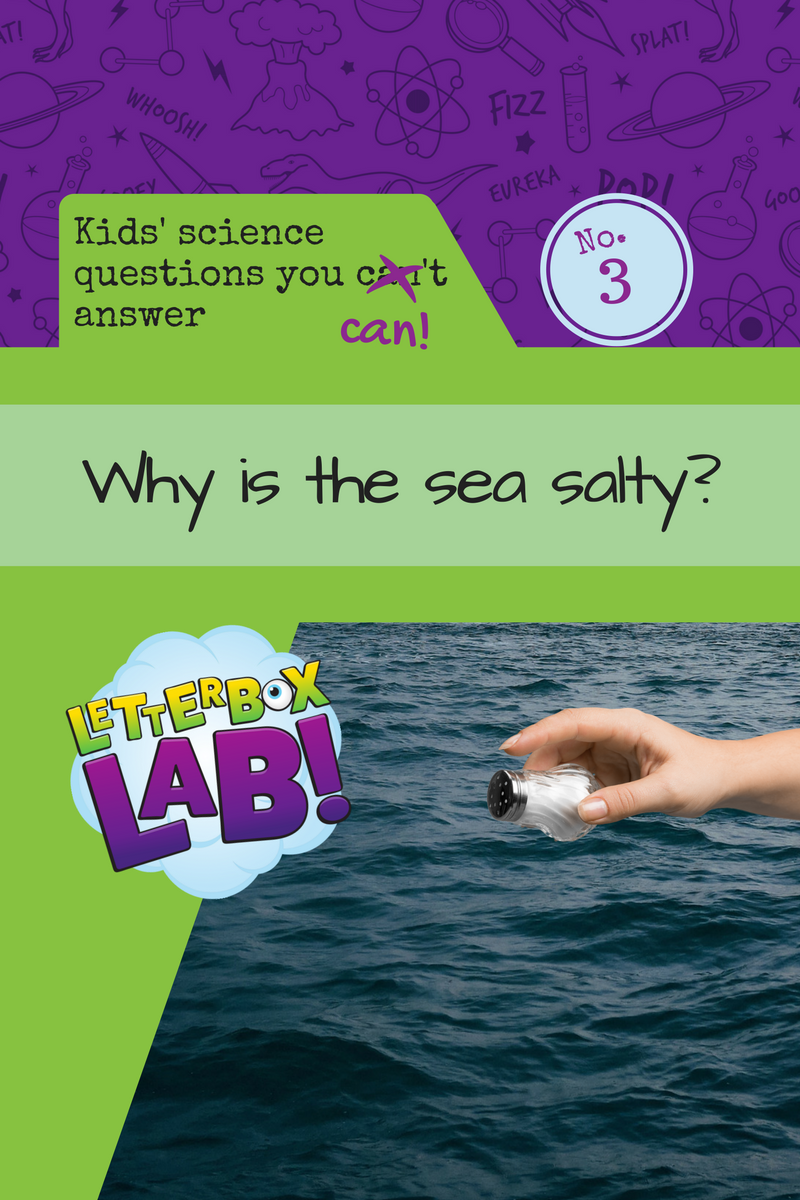There is salt everywhere: in the soil, in rocks, in living things. Rivers carry this salt into the seas and it gets stuck there because there’s nowhere else for it to go. Some of the water in the seas gets taken out when the heat of the Sun makes it evaporate (escape as a gas) but the evaporated water is pure water – the salt gets left behind, building up and making the sea saltier and saltier.
That’s an easy answer, but why give an answer when you and your child can experiment to find the answer? Make up a big bottle of salty water and pour a little into a dish somewhere warm. Every time most of the water has evaporated, top up the dish from the bottle. Keep doing this and after a while you will see lots of salt building up on the dish, just like it did in the ocean.
This experiment has actually revealed the answer to another question: “Why doesn’t the sea keep getting saltier and saltier?”. At first you couldn’t see any salt in the water because it was dissolved, just like in seawater where you can’t actually see crystals of salt most of the time. When you put too much salt into water, however, there’s not enough room in the water for all of the salt to dissolve, so some of it sinks to the bottom. The same is true of the sea. Rivers are continuously bringing more salt into the seas but some salt cannot dissolve and sinks to the bottom. Your experiment is a great example of how in science, some of the greatest discoveries are made by mistake.
That’s an easy answer, but why give an answer when you and your child can experiment to find the answer? Make up a big bottle of salty water and pour a little into a dish somewhere warm. Every time most of the water has evaporated, top up the dish from the bottle. Keep doing this and after a while you will see lots of salt building up on the dish, just like it did in the ocean.
This experiment has actually revealed the answer to another question: “Why doesn’t the sea keep getting saltier and saltier?”. At first you couldn’t see any salt in the water because it was dissolved, just like in seawater where you can’t actually see crystals of salt most of the time. When you put too much salt into water, however, there’s not enough room in the water for all of the salt to dissolve, so some of it sinks to the bottom. The same is true of the sea. Rivers are continuously bringing more salt into the seas but some salt cannot dissolve and sinks to the bottom. Your experiment is a great example of how in science, some of the greatest discoveries are made by mistake.




Add Comment